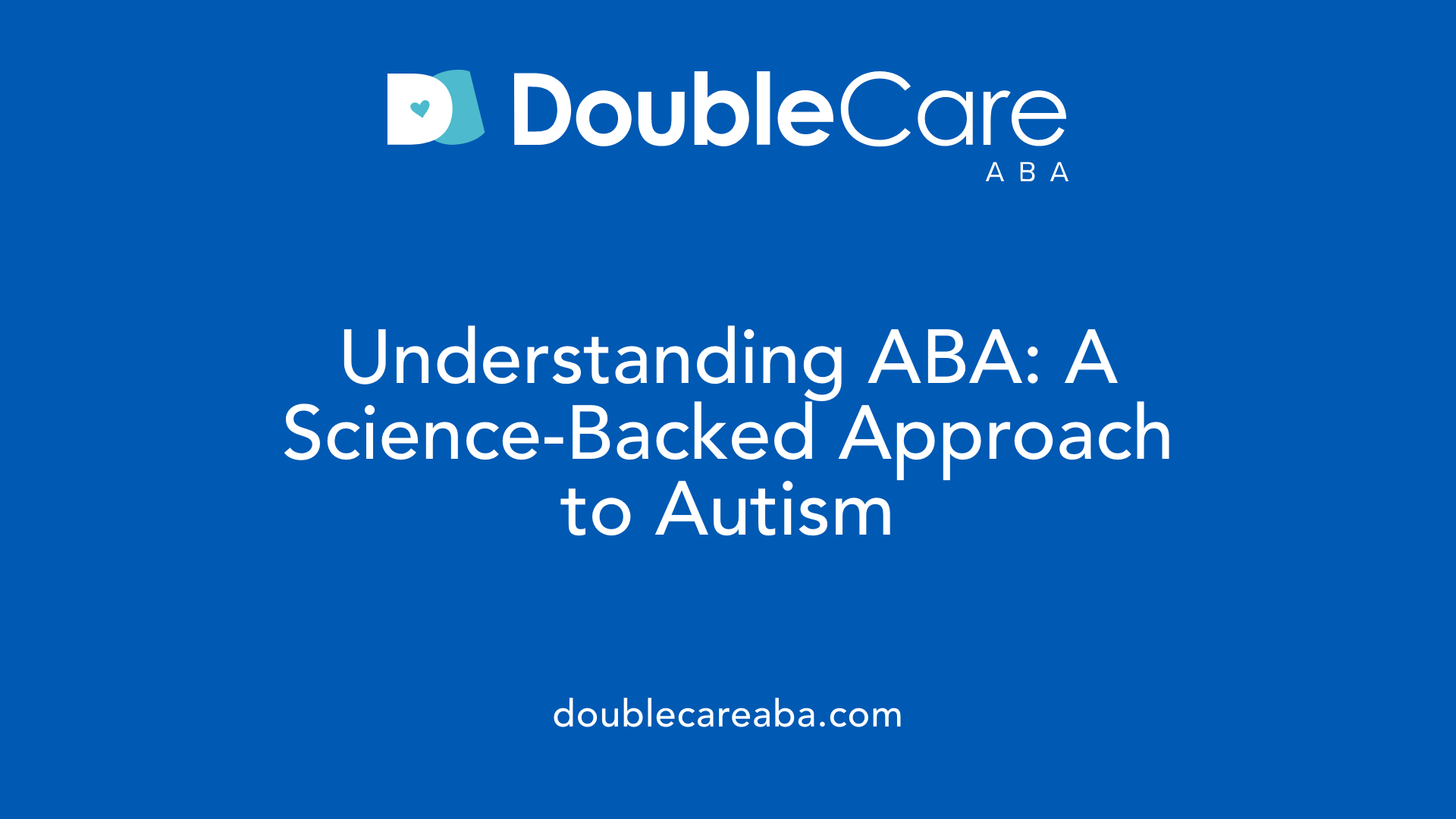Autism and Attention Challenges: Strategies That Work
Effective Interventions for Autism and Attention Challenges

Understanding Autism and Behavioral Challenges
Autism spectrum disorder (ASD) presents complex challenges, particularly with social interaction, communication, and attention regulation. Many individuals with autism also experience attention difficulties and behavioral issues that can impact daily functioning. Recognizing the roots of these behaviors and employing targeted, evidence-based strategies is essential in supporting individuals to thrive. This article explores proven therapeutic approaches, behavioral interventions, and practical strategies designed to address autism and attention challenges effectively.
Applied Behavior Analysis (ABA): A Comprehensive Behavioral Approach

What is Applied Behavior Analysis (ABA) therapy?
Applied Behavior Analysis (ABA) therapy is a science-based, individualized treatment designed to improve specific behaviors and skills in individuals with autism spectrum disorder (ASD). It focuses on enhancing areas such as communication, social skills, attention, and academics while reducing challenging or disruptive behaviors. ABA uses positive reinforcement and examines the triggers and consequences of behaviors to understand, teach, and modify them effectively.
Techniques and Methodologies in ABA
ABA incorporates several methods to teach skills systematically. Discrete Trial Training (DTT) breaks down skills into small, manageable steps, teaching and reinforcing each component with clear data tracking. Pivotal Response Training (PRT) occurs in natural settings and targets essential behaviors like communication initiation, helping children generalize skills in everyday life. The Early Start Denver Model (ESDM), based on ABA principles, uses play and social interaction to boost learning and social development in young children between 12 and 48 months.
Goals and Measurable Outcomes of ABA
ABA therapy sets personalized goals tailored to the individual’s needs, focusing on increasing functional abilities and independence. Progress is closely monitored through collected data, allowing modifications to improve treatment effectiveness. Outcomes include better communication, reduced problem behaviors, increased social engagement, and enhanced learning skills, helping children with autism lead more adaptive and fulfilling lives.
Settings and Professionals Providing ABA
ABA interventions are delivered in diverse environments, including homes, schools, and community settings, providing comprehensive support. Certified professionals guide therapy—these include Board Certified Behavior Analysts (BCBAs) and Registered Behavior Technicians (RBTs). Parental involvement and trained staff cooperation strengthen the therapy’s effectiveness, ensuring learning is consistent across settings and daily routines.
Professionals Delivering ABA Therapy and Their Roles

Types of qualified ABA providers
Applied Behavior Analysis (ABA) therapy is typically delivered by a team of trained professionals who specialize in behavioral analysis and autism treatment. The most common providers include Board Certified Behavior Analysts (BCBAs), who oversee the design and implementation of individualized treatment plans. Registered Behavior Technicians (RBTs) and behavior therapists often carry out the daily therapy sessions under the supervision of a BCBA. These practitioners target improvements in key areas such as communication, social skills, and self-care.
Work environments for ABA therapy
ABA therapy can be administered in diverse settings to best suit the needs of the individual. Sessions frequently take place in the child's home to provide a familiar environment, but schools, clinics, and community spaces are also common. These varied environments allow for generalization of skills and promote consistent learning and behavior across different contexts.
Collaboration and family involvement in ABA
A critical aspect of effective ABA therapy is strong collaboration between providers, families, and educators. Professionals work closely with parents and caregivers to provide training and guidance, enabling them to reinforce progress outside therapy sessions. This teamwork ensures consistency, supports generalization of acquired skills, and helps tailor interventions to the child's unique needs.
Specialized companies offering ABA services
Many ABA therapy services are delivered through specialized companies that focus exclusively on evidence-based autism interventions. These organizations employ qualified and trained staff who follow established treatment protocols recommended by healthcare and educational authorities. By combining experienced professionals, structured programs, and family involvement, such companies strive to maximize the benefits of ABA therapy for children with autism.
Maximizing Benefits of ABA Therapy for Autism

How can ABA therapy benefit individuals with autism?
ABA therapy is a powerful tool for supporting skill development in individuals with autism. It focuses on teaching essential abilities such as communication, social interaction, daily living skills, and academic competencies. Using methods like Discrete Trial Training (DTT) and Pivotal Response Training (PRT), ABA breaks down complex skills into manageable parts and reinforces positive behaviors, tailoring interventions to each child’s unique needs.
Skill development through ABA
ABA programs foster growth in imitation, language, social skills, and motor abilities. By providing consistent, structured learning with trained staff and family involvement, children often improve their functional communication, coping mechanisms, and independence. For instance, functional communication training helps reduce frustration-related behaviors by teaching more effective ways to express needs.
Behavior reduction and replacement strategies
One of ABA’s strengths is its focus on reducing challenging behaviors by understanding their function and teaching replacement skills. Positive reinforcement encourages desirable behaviors, while extinction techniques decrease problematic ones. This balanced approach helps individuals develop adaptive coping strategies, contributing to better emotional regulation.
Importance of early and intensive intervention
Starting ABA therapy early, ideally before age 3, maximizes the brain’s plasticity, enhancing learning potential. Intensive treatment—often around 25 hours per week for at least two years—has been shown to provide the greatest benefits. Early Start Denver Model (ESDM), based on ABA principles, underscores the effectiveness of early social and language-focused interventions.
Quality of life improvements and inclusion
Beyond reducing challenging behaviors, ABA therapy supports social engagement and independence, improving overall quality of life. Children become better equipped to participate in school and community activities. Additionally, ABA’s data-driven approach provides measurable progress, reinforcing inclusion and understanding within families and society. The therapy lays a strong foundation for lifelong growth and success.
Behavioral Strategies: Prevention, Replacement, and Response

What Are the Main Categories of Behavioral Strategies for Autism?
Behavioral interventions for individuals with autism typically fall into three broad categories: prevention, replacement, and response. These approaches are designed to understand the underlying causes of challenging behaviors and support positive outcomes by addressing those causes directly.
How Do Prevention Strategies Work?
Prevention strategies focus on altering the environment or routine to reduce the likelihood of challenging behaviors occurring. Examples include using visual schedules to increase predictability and reduce anxiety about daily activities. Advanced warnings and timers help prepare individuals for transitions, making changes less abrupt.
Priming techniques, such as social stories, familiarize individuals with upcoming events or situations. This preparation can ease uncertainty and help manage reactions before challenges arise.
What Are Replacement Strategies?
Replacement strategies teach alternative skills that serve the same function as problematic behaviors. Functional communication training is one example, helping individuals express their needs effectively to reduce frustration.
Other replacement methods include teaching coping skills like mindfulness exercises, which support emotional regulation. Building daily living skills also encourages independence and can lessen behaviors stemming from stress or confusion.
What Do Response Strategies Involve?
Response strategies address behaviors after they occur. Positive reinforcement encourages appropriate behaviors through rewards and praise, increasing the likelihood of those behaviors repeating.
Extinction techniques involve discontinuing reinforcement of challenging behaviors, gradually reducing them over time. These strategies must be used carefully and often in combination with prevention and replacement to be most effective.
Combining Strategies for Success
Comprehensive behavioral plans typically integrate prevention, replacement, and response elements. This personalized approach is grounded in thorough behavioral assessments, ensuring interventions meet individual needs.
Integrating Developmental, Psychological, and Educational Approaches
What benefits does speech and language therapy provide for individuals with autism?
Speech and language therapy plays a crucial role in improving communication skills for people with autism. It focuses on enhancing understanding and use of speech and language, teaching phrase requests, expressing emotions, adjusting speech rhythm, and utilizing alternative communication methods like augmentative devices.
How do occupational and physical therapies support individuals with ASD?
Occupational therapy helps develop daily living skills such as dressing, eating, bathing, and social interactions. It often includes sensory integration techniques to address sensory processing challenges. Physical therapy complements this by improving gross motor skills, balance, and coordination, promoting greater independence.
What educational models aid autistic learners?
Educational strategies like TEACCH emphasize consistency and visual learning to support academic and related skills. Social skills groups provide structured opportunities for children and young adults to develop peer relationships through instruction, modeling, role play, and visual aids. Parent training programs also empower families to support social engagement effectively.
How do psychological interventions like CBT and mindfulness help?
Cognitive-behavioral therapy (CBT) and mindfulness-based treatments aid individuals in managing anxiety, depression, and emotional regulation difficulties commonly associated with autism. These approaches teach self-regulation skills, attention control, and coping mechanisms, which can reduce externalizing behaviors and improve overall quality of life.
By combining these developmental, psychological, and educational methods, therapies can holistically address multiple facets of autism, promoting better communication, daily functioning, social skills, and emotional well-being.
Parent and Family Involvement in Autism Therapies
Parent Training Programs and Psychoeducation
Parent training programs play a vital role in autism therapies by equipping families with practical strategies to support and engage their child effectively. These programs teach parents how to follow their child's lead, gain their attention, offer meaningful choices, and encourage interaction with peers. Additionally, psychoeducation sessions provide families with insights into their child's behaviors, emotional needs, and how to manage challenges proactively.
Collaboration with Therapists to Reinforce Progress
Close collaboration between parents and therapists enhances the child's development by ensuring that interventions are consistently reinforced at home. Families work alongside trained professionals, sharing observations and progress data to tailor strategies that align with the child's unique needs and strengths. This partnership fosters a unified approach to behavioral and developmental goals.
Strategies for Communication and Managing Behaviors at Home
Effective communication and behavior management at home revolve around understanding and responding to the child's verbal and nonverbal cues. Parents learn to validate their child's emotions and concerns, which promotes emotional regulation and reduces challenging behaviors. Implementing visual aids such as schedules, photographs, or models can clarify expectations and increase compliance.
Use of Positive Feedback and Respecting Child Cues
Positive feedback is a cornerstone in encouraging desired behaviors, proving more effective than negative feedback. Parents are encouraged to listen attentively to both verbal and nonverbal signals from their child, ensuring their responses are supportive and respectful. Providing choices within defined boundaries helps children feel a sense of control, fostering cooperation and reducing resistance.
By empowering families through education, communication strategies, and partnership with therapists, autism therapies become more comprehensive and effective in promoting meaningful progress at home and beyond.
Practical Strategies to Support Attention and Emotional Regulation
Use of Visual Aids, Schedules, and Choices to Improve Attention
Visual aids such as photographs, models, and consistent visual schedules can significantly enhance understanding and compliance for children with autism. These tools help structure the environment and provide clear expectations, reducing anxiety related to transitions or unpredictability. Additionally, offering children choices within set parameters empowers them, promotes cooperation, and increases engagement by giving a sense of control.
Creating Calm-Down Spaces and Teaching Breaks
Establishing calm-down spaces offers a safe, quiet area for children to regulate their emotions when overwhelmed. Teaching children to request breaks during activities helps them develop self-awareness and emotion regulation skills. Both strategies support attention by allowing children to reset and reduce the chances of disruptive behaviors.
Reinforcement Systems and Alternative Accommodations
Positive reinforcement systems, which reward appropriate behaviors, encourage children to develop desirable habits and skills. Alongside reinforcement, providing accommodations such as alternative responses or adaptive tools ensures that children can succeed in tasks despite challenges. Coupling reinforcement with ignoring minor challenging behaviors that serve as communication attempts can also shift focus to positive development.
Mindfulness and Self-Regulation Techniques to Reduce Tantrums and Reactivity
Interventions incorporating mindfulness and attention control, such as adapted cognitive-behavioral techniques, have shown promise in reducing temper tantrums and improving adaptive coping strategies. Mindfulness exercises help children with autism increase self-awareness and emotional control, which can decrease reactivity and externalizing behaviors. These approaches often involve teaching self-regulation tools like time-outs and concentration exercises, fostering long-term emotional resilience.
Building a Supportive Framework for Autism and Attention Challenges
Addressing autism and attention challenges requires a multifaceted approach that blends scientifically validated behavioral therapies with developmental, psychological, and educational interventions. Applied Behavior Analysis (ABA) remains a cornerstone due to its strong evidence base and individualized design, but integrating complementary strategies enhances outcomes. Greater involvement of families and professionals working collaboratively, along with personalized support systems focusing on communication, social skills, and emotional regulation, all contribute to meaningful progress. Early intervention, consistency, and respect for individual needs empower those with autism to develop essential skills, manage behaviors, and enjoy fuller participation in their communities.
References
- Treatment for Behavioral Issues in Autism
- Treatment and Intervention for Autism Spectrum Disorder
- Behavioral Therapies: Key Interventions in ASD
- The effectiveness of an attention‐based intervention for ...
- Helpful strategies to promote positive behavior
- Recent advancement in interventions for autism spectrum ...
- Autism Therapy Types & Interventions
- Applied Behavior Analysis (ABA)
- The Top 10 Reasons Children With Autism Deserve ABA
- 6 Benefits of ABA Therapy for Children with Autism
















